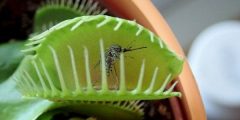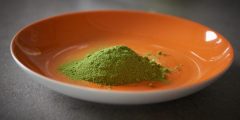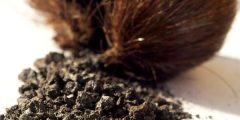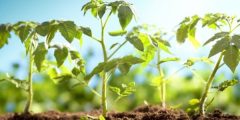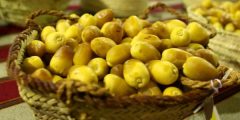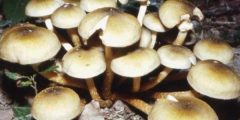Definition of perennial plant
Perennial plants are plants that live for more than two years, and the majority of them grow and flower during the spring and summer, then die during the fall and winter, only to grow again from their roots the following year. Perennial plants are a type of tree that are classified based on their stages of growth, This does not apply to all types of perennial plants, as some are adapted to survive the fall and winter without dying, and without having to grow again from the roots.[XNUMX]
This is in contrast to annual plants, which complete their life cycle within one season. Perennial plants are expected to live several seasons, bearing fruit every year. The reason for this is that they remain dormant for extended periods of time before they flower again. Perennial plants are distinguished by their ability to withstand under Difficult conditions, but not all of them are like that. Some die at freezing temperatures or during very dry conditions, or during special growing conditions.[XNUMX]
Under these conditions, plants are usually unable to germinate from seed and reproduce within one year. Therefore, perennial plants have evolved to increase the chances of reproduction and survival. They live for years and flower during the spring. Crops of perennial plants are usually harvested in difficult climatic conditions or during short seasons. dry weather, Perennial plants are used in the charcoal industry.[XNUMX]
Read also:What is peanutIn order for perennial plants to survive for several years, they devote a large percentage of their growth to vegetative growth, which enables them to access limited resources and live longer. They often have dense, deep roots to access water and nutrients, or long, powerful stems to obtain the greatest possible amount of nutrients. Sunlight, and perennial plants are characterized by having reservoirs for regrowth during difficult conditions, such as: drought, freezing winters, and activities harmful to them such as grazing, as they store carbohydrates, fats, and proteins in their stems and roots.[XNUMX]
Types of perennial plants
Plants are classified into annual plants, biennial plants, and perennial plants. Biennial plants live for two years, annual plants live for one year, and perennial plants exceed 3 years or more. What distinguishes them is that they evolved in environments with limited resources due to the presence of other plants around them. There is also intense competition, and their growth rates are lower than annual plants.[XNUMX]
There are different varieties of perennial plants available, and they are a suitable choice for creating a garden full of colors and fragrant scents[XNUMX] It adds a variety of colors from April to November, and usually attracts bees and butterflies when it blooms, and many of them are used for decorative purposes, and what distinguishes everything that falls under the category Names of perennial plants It is easy to grow and has multiple uses, either as an addition between shrubs, cover under trees, in pots, or grown separately to demarcate a garden. It is an easy alternative to annual plants.[XNUMX] Below is a mention of the types of perennial plants:
Read also:The fruit of love
Perennial flowers
Perennial flowers bloom annually with new buds, fresh colors, and fragrant scents, and require little care, which makes them an ideal choice for anyone who wants to add lasting beauty to his garden, yard, or the like. The characteristics of perennial flowers vary from one type to another. Some of them bloom for a few years before dying completely, and some of them only bloom one day every year, but together they represent a beautiful vegetation.[XNUMX] The most prominent examples are the following:[XNUMX]
- Black-eyed Susan.
- Salvia or sage.
- Lancet bug flower.
- And Venus and nebulae.
Perennial herbs
Perennial herbs are one of the most popular types of herbs among gardeners, because they live for years and are used in many foods. They can be frozen or dried for winter use, as they are then either dead or covered with snow, waiting for the spring to grow again. It can be grown in containers, but it always prefers firm ground.[XNUMX] The most prominent examples are the following:[XNUMX]
- Mint, rosemary, and sage.
- Thyme, garlic, and marjoram.
- safari plant, The Samar plant is widespread in the Emirates.
- tarragon,[XNUMX]Tarragon is also called tarragon.
Read also:types of tea
Perennial fruits and vegetables
Perennial fruits and vegetables require the same amount of care as perennial herbs and flowers. There is no need to plant them annually or till them. They also flourish and produce a crop rich in beneficial nutrients throughout the season. They are characterized by their resistance to various difficult conditions if they are provided with a suitable location and climate. They are usually also resistant. to pesticides, diseases, drought, and weeds,[XNUMX] The most prominent examples are the following:[XNUMX]
- Asparagus.
- And hot radish.
- And arugula.
- And cabbage.
Features of perennial plants
Here are the advantages of perennial plants:
- It does not need a lot of care, as there is no need to plow it or plant it annually, as is the case with annual plants.[XNUMX]
- It is considered to have a larger yield, as it provides multiple crops at different times of the year.[XNUMX]
- Versatile uses, as it is used either for aesthetic purposes, or for protection from soil erosion, or for food, or as plant cover.[XNUMX]
- It helps build soil, as it is a great benefit to the soil, and provides a healthy environment for a large number of organisms, such as mushrooms and others necessary for the sustainability of the soil.[XNUMX]
Summary
From the above, perennial plants can be briefly considered a type of plant that lives for two years or more. Perennial plants are characterized by their ability to withstand difficult conditions, such as drought, freezing winters, or harmful activities such as grazing, as they store carbohydrates, fats, and proteins in their stems and roots. It has also evolved to increase the chances of reproduction and survival. It lives for years and blooms during the spring. Perennial plant crops are usually harvested in difficult climatic conditions or during short seasons or dry weather.

